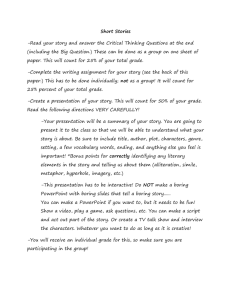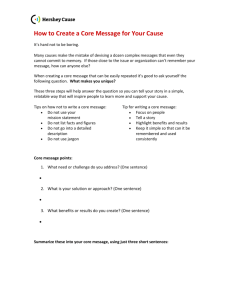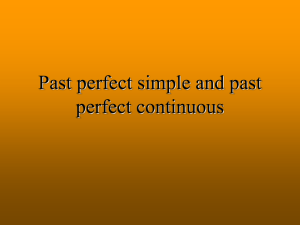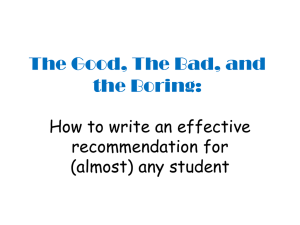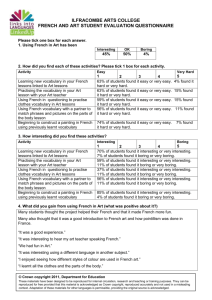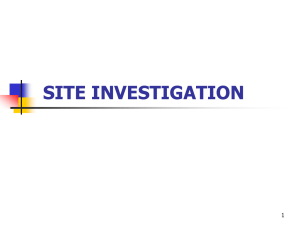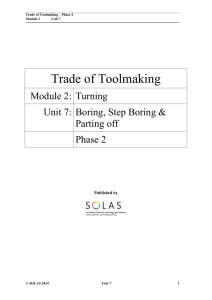Physical Geology Lab – ERTH 115
advertisement
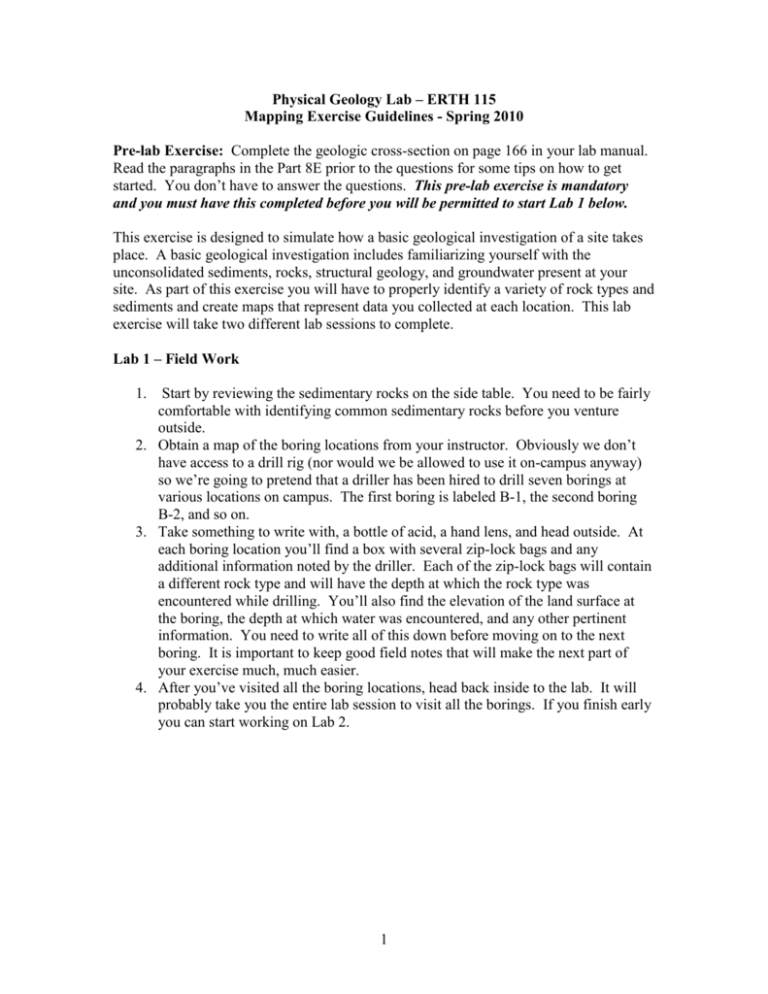
Physical Geology Lab – ERTH 115 Mapping Exercise Guidelines - Spring 2010 Pre-lab Exercise: Complete the geologic cross-section on page 166 in your lab manual. Read the paragraphs in the Part 8E prior to the questions for some tips on how to get started. You don’t have to answer the questions. This pre-lab exercise is mandatory and you must have this completed before you will be permitted to start Lab 1 below. This exercise is designed to simulate how a basic geological investigation of a site takes place. A basic geological investigation includes familiarizing yourself with the unconsolidated sediments, rocks, structural geology, and groundwater present at your site. As part of this exercise you will have to properly identify a variety of rock types and sediments and create maps that represent data you collected at each location. This lab exercise will take two different lab sessions to complete. Lab 1 – Field Work 1. Start by reviewing the sedimentary rocks on the side table. You need to be fairly comfortable with identifying common sedimentary rocks before you venture outside. 2. Obtain a map of the boring locations from your instructor. Obviously we don’t have access to a drill rig (nor would we be allowed to use it on-campus anyway) so we’re going to pretend that a driller has been hired to drill seven borings at various locations on campus. The first boring is labeled B-1, the second boring B-2, and so on. 3. Take something to write with, a bottle of acid, a hand lens, and head outside. At each boring location you’ll find a box with several zip-lock bags and any additional information noted by the driller. Each of the zip-lock bags will contain a different rock type and will have the depth at which the rock type was encountered while drilling. You’ll also find the elevation of the land surface at the boring, the depth at which water was encountered, and any other pertinent information. You need to write all of this down before moving on to the next boring. It is important to keep good field notes that will make the next part of your exercise much, much easier. 4. After you’ve visited all the boring locations, head back inside to the lab. It will probably take you the entire lab session to visit all the borings. If you finish early you can start working on Lab 2. 1 Lab 2 – Construction of Maps Note: Although the cross-sections (Figures 5 and 6) aren’t listed first it may be helpful to start by completing these figures. 5. Here’s a list of all the maps you’ll be required to complete for this investigation and instructions for each map: a. Figure 1 – Soil Boring Locations This map is already created for you. One down. b. Figure 2 – Map of Surficial Deposits At each of the boring locations you should have noticed a bag with unconsolidated sediments that represented near-surface deposits. This is what should be included on this map. In the legend you need to explain what sediments are represented in your study area and represent each different sediment type with a different color on your map. I’ll show you how to do this. Remember all symbols, colors, etc. used on your maps should be included in the legend. If you’re not sure what should be included please ask. Neatness counts! c. Figure 3 – Bedrock Geologic Map Showing Cross-Section Locations This map will show what type of bedrock is immediately beneath the sediments at the sediment-bedrock interface. This is similar to the Indiana Bedrock Geology Map you’ve seen before. Again, in the legend you need to explain what rock types are represented in your study area and represent each different rock type with a different color on your map. See question 6 below for a discussion of the different rock units should be named. Don’t forget to add the proper strike and dip and structural symbols to your map. d. Figure 4 – Map Showing Water Table Surface Using the elevation of the land surface at each boring and the depth at which water was encountered, determine the elevation of the water table at each boring. Use these water table elevations to create a water table contour map with 1 foot contours shown. Assume the elevation of the Wabash River is 399 feet. Draw in 3 or 4 arrows that indicate the direction that groundwater is flowing. 2 e. Figure 5 – Cross-Section A-A’ Geologic cross-sections help us visualize what’s going on beneath the surface. You’ll notice on the Bedrock Geologic Map (Figure 3) that crosssection lines (A-A’ and B-B’) are shown. Construct a geologic crosssection along each of these lines. Refer to pages 165 and 209 in your lab manual for a refresher on how to construct cross-sections. f. Figure 6 – Cross-Section B-B’ See the instructions for Figure 5 above. 3
